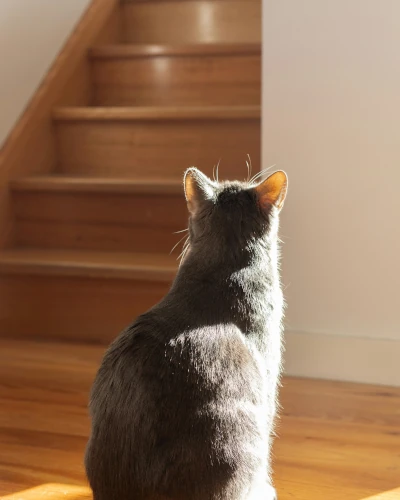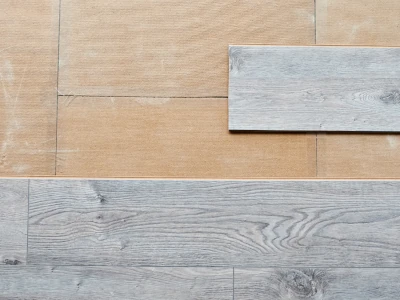Hard flooring is a popular upgrade in Arizona homes, offering durability, style, and easy upkeep. While it performs well on ground-level concrete slabs, installing hard flooring on second stories comes with its own set of challenges. That’s because upper floors are usually built with wood subfloors, which react differently to hard surfaces than concrete does.
These differences can affect how the floor sounds and feels. Without the right materials and preparation, second-story hard flooring can be noisy, creaky, or unstable underfoot. Understanding how subfloor construction influences these outcomes is essential before taking on an upstairs flooring project in Arizona.
What's The Difference Between The First and Second Floors?
Most second-story subfloors in Arizona homes are wood-framed, typically using plywood or OSB over joists. This type of construction is lightweight and flexible, but it can lead to increased noise, movement, and a less solid feel when hard flooring is installed without proper underlayment or reinforcement.
In contrast, concrete subfloors—common on ground floors—are dense, rigid, and naturally reduce sound transmission. They provide a solid base for hard flooring with minimal flexing or bounce. Because of their stability, they’re less prone to creaking or deflection, making them more forgiving when installing tile, hardwood, or laminate without extensive soundproofing layers.

How Are Some Second Story Floors Louder?
Wood subfloors are louder because they flex and amplify impact sounds like footsteps, especially with hard surfaces. This is a particular issue for laminate, hardwood, and tile flooring, which don’t absorb sound well. Without proper underlayment, these floors can sound hollow, creak, or transmit noise to rooms below. These sounds can be disruptive, especially without proper soundproofing. Common types of noise include:
- Footsteps and stomping
- Creaking or squeaking
- Dropped object impact
- Echoes or hollow sounds
- Sound transmission to rooms below
Why Do Some Second Story Floors Feel Less Solid?
Hard flooring on second-story subfloors can sometimes feel unstable or hollow underfoot. This is due to the natural flex of wood-framed subfloors, especially if the joists are widely spaced or the surface isn’t perfectly level. Homeowners may notice a slight bounce, soft spots, or an uneven feel that detracts from the flooring’s quality.
Certain flooring types highlight these problems more than others. Laminate tends to feel and sound hollow without direct attachment to the subfloor. Tile can crack if installed over a subfloor that deflects under pressure. Even engineered hardwood may creak or shift on an uneven or unstable surface.
What Can I Do About These Issues?
Proper subfloor preparation, quality underlayment, and choosing the right flooring type can significantly reduce sound and improve stability on second-story installations.
Proper Underlayment

Underlayments dampen sound by creating a buffer layer between the hard flooring and the subfloor. This layer absorbs vibrations from footsteps and impacts, reducing the transmission of sound through the floor and into lower rooms. High-quality acoustic underlayments are engineered with materials like dense foam, rubber, or felt that compress slightly to absorb shock, while maintaining floor stability. Some also include built-in barriers to block airborne sound and minimize echo within the room.
Not all underlayments are created equal. Cheap or generic products may compress too easily, offer little sound dampening, or degrade over time, leading to creaky, unstable floors. For upstairs installations, using an underlayment specifically designed for hard surfaces over wood subfloors is essential. These products often include features like sound insulation ratings (IIC/STC), moisture barriers, and rigid core support. Choosing the right one can greatly improve both the acoustic and structural quality of the floor.
Professional Installation
Professional flooring installers can significantly improve the soundproofing and rigidity of second-story floors by addressing issues at the subfloor level before installation begins. They assess joist spacing, subfloor integrity, and surface flatness—critical factors that affect how hard flooring performs. If needed, they can reinforce weak areas, re-secure loose panels, or apply leveling compounds to create a more stable base.
In terms of soundproofing, professionals select underlayment materials based on the specific flooring type and subfloor construction. They may also recommend adding insulation between floors or using glue-down methods when appropriate. Their experience ensures that all components work together for quieter, more solid floors.



